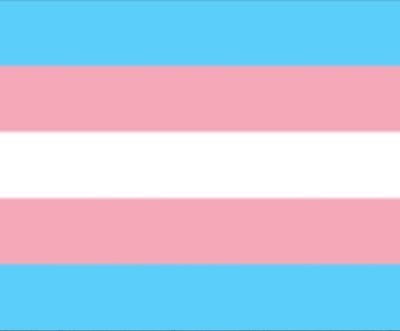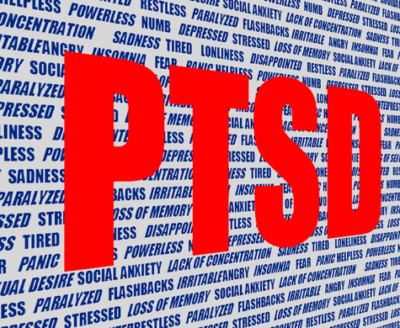Cervical screening for LGBTQ+ people
There is often an assumption that being LGBTQ+ nowadays is relatively easy; that Western society in general, is pretty accepting and we don’t face much in the way of challenges. Whilst things are undeniably better than they were 30 years ago, things are far from perfect. We still live in a world where cisgendered, heteronormativity is the standard and those of us who exist outside of those classifications have to battle that on a daily basis. In healthcare, this is particularly problematic.
“Most questions were directed at my partner though I was included in the process…but as a “close friend”. It isn’t questioned, but it is assumed you are heterosexual until you choose to make them aware of what you thought should be obvious. We didn’t always do this as this might add to what was a stressful event by itself.”
As a student nurse I have certainly witnessed some outdated and ignorant attitudes in practice, but I really wasn’t prepared for the extent of it as a patient. During my treatment for cervical cancer I was assumed to be a heterosexual woman at almost every encounter with health care professionals, no one ever asked me about my sexual orientation and I was consistently left with the dilemma of coming out as a queer woman, repeatedly, or letting it slide. This isn’t a new experience for me, but in this context in particular, it was pretty exhausting, and I’ll be honest on most occasions I just nodded along with the practitioner in question, lacking the energy required to correct them. You might be thinking ‘well sure, but is that really such a big deal?’ Yes, actually, it is. It’s about the invisibility of certain identities, about the persistence of stereotypes and attitudes, it’s about the danger of making assumptions and it’s simply not good enough.
In healthcare this can pose a huge barrier to accessing appropriate services. For example, when I first went to see my GP with symptoms of vaginal bleeding and expressed my concerns about cervical cancer, she asked me when I had last had sex. I told her when, and that it was with a female partner, to which she responded, “but you have had sex with men?” The underlying (and very worrying) insinuation here was that if I hadn’t (had sex with men) that I would have nothing to worry about. Sadly, this is a belief still held by some patients and health care professionals alike.
“A UK study of over 6,000 LGB women in 2007 highlighted that 15% of LGB women over the age of 25 had never had cervical cancer screening test. This is compared to 7% of women in the general population. Of those women who had never been for a cervical screening test, one in five had been told by a health professional that they are not at risk and one in fifty had said that they had been refused a test based on their sexual orientation.”
More worrying are the experiences of trans people in healthcare. I recently participated in a tweet chat where several trans people made reference to the fact that they avoided accessing health services at all costs because of the ignorance and often blatant transphobia they encountered from health care providers. It was so hard to hear, as a student nurse I don’t ever want to be the barrier.
“In a recent survey of trans people, 21% had experienced discrimination, transphobia, homophobia or unfair treatment based on their gender identity from their GP or another member of staff at the GP surgery.”
Trans men that have a cervix, like cisgendered women with a cervix, should attend regular cervical screening (pap smear/smear test) appointments and yet this is frequently misunderstood. In fact, if a trans man is registered with their GP as male then they may not be routinely invited for cervical screening, as is standard procedure here in the UK.
“Screening may be particularly challenging for trans and non-gendered individuals as the service is by nature gendered and literature and imagery often assumes a heterosexual biological female status of the patient.”
Buck Angel (a transexual man and trans activist) and colleagues have set up FTM Health; a platform for sharing experiences about accessing health services as trans men, to support each other and educate health care providers about the needs and challenges faced by trans men. It’s such an important message that needs to be heard loud and clear by ALL. During the tweet chat I mentioned previously, several people asked why they would need to know about trans issues when they don’t work in specialist services. Trans people may well access specialist services at some point, but invariably they will also access all manner of services, including general practice for cervical screening, where their smear test will likely be carried out by a nurse or GP. Anyone who has attended a smear knows it isn’t the most comfortable 5 minutes of your life, imagine for a moment the indignity of the experience when conducted by a person who doesn’t understand your experience as a trans man, who has no idea of the physical issues you may be experiencing, who doesn’t have the language to start a conversation about the terminology you feel comfortable with and ultimately makes the experience not ‘slightly uncomfortable’ but actually traumatising, an experience you never wish to revisit. ALL health care professionals need to understand the varying needs of the diverse communities we serve without exception. The way to do that? Listen, learn, expand your horizons, work in partnership with your patients, call out colleagues, reflect on your weaknesses as well as strengths, have the humility to accept when you get it wrong and the willingness to listen, learn and do better next time.
References
All quotes in bold taken from:
https://www.macmillan.org.uk/_images/LGBT-People-with-Cancer_tcm9-282785.pdf – The emerging picture on LGBT people with cancer
Articles about access issues and misinformation:
https://www.bbc.co.uk/news/health-39230807 – ‘Lesbians told they did not need cervical screening’
https://www.jostrust.org.uk/your-stories/women-affected-cervical-cancer/vivians-story – ‘As a gay woman I always thought I didn’t need smear tests’
https://www.standard.co.uk/news/health/trans-men-not-offered-nhs-routine-screening-for-cancers-a3740586.html – ‘Trans men not offered routine screening’
Information and resources for Trans men and gender non-conforming people with a cervix:
https://ftmhealth.com – Buck Angel and FTM Health team’s site for the health of transgender men. It has a really useful resource that can be printed out and taken to appointments.
https://www.instagram.com/ftmhealthofficial/ – FTM Health’s Instagram account
https://www.instagram.com/buckangel/ – Buck Angel’s Instagram account
https://assets.publishing.service.gov.uk/government/uploads/system/uploads/attachment_data/file/623309/Transgender_cross_programme_screening_leaflet.pdf – Government doc ‘Information for trans people, NHS screening programmes’ (this is relevant to all trans people as discusses all screening programmes in UK)
https://www.nhs.uk/common-health-questions/sexual-health/should-trans-men-have-cervical-screening-tests/ – NHS guidance on who requires cervical screening
https://www.youtube.com/watch?v=UiPFCeQnaxE – A video explaining cervical screening for trans men by health care professionals
https://community.macmillan.org.uk/cancer_experiences/lgbt/ – Macmillan’s online community space for LGBT people
https://www.jostrust.org.uk/welcome-jo’s-cervical-cancer-trust-forum/lgbtq – Jo’s Trust’s dedicated LGBTQ forum
Information and resources for LGBQ women with a cervix:
https://www.jostrust.org.uk/blog/let’s-talk-about-it/lgb – Jo’s Trust, challenging persistent myths about cervical screening/cancer and LGB women
https://community.macmillan.org.uk/cancer_experiences/lgbt/ – Macmillan’s online community space for LGBT people
https://www.jostrust.org.uk/welcome-jo’s-cervical-cancer-trust-forum/lgbtq – Jo’s Trust’s dedicated LGBTQ forum
https://www.stonewall.org.uk/sites/default/files/Experiences_of_Healthcare_Stonewall_Health_Briefing__2012__.pdf – Stonewalls LGB ‘Experiences of Healthcare’










